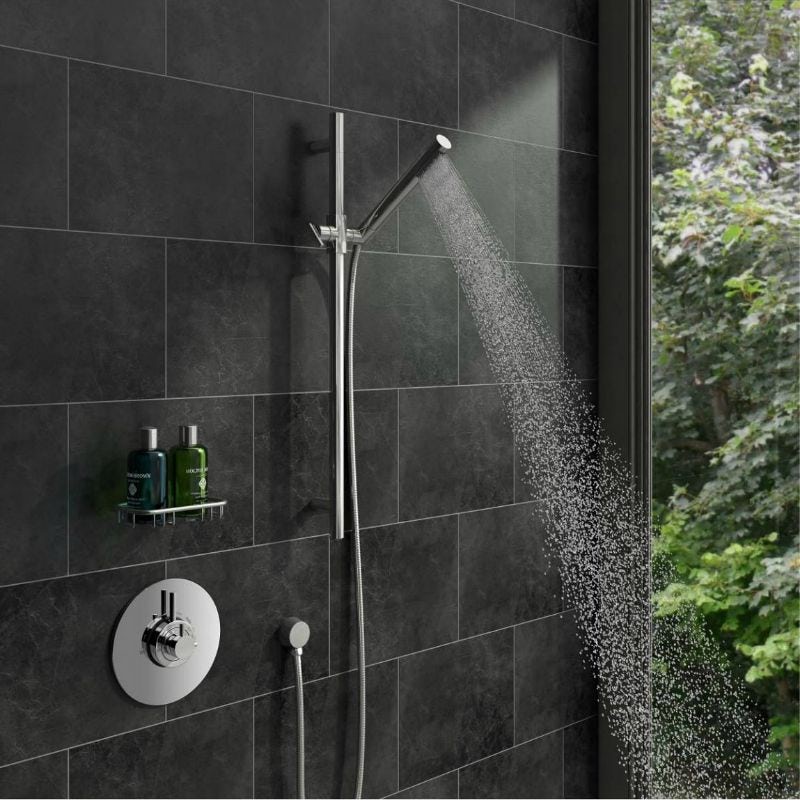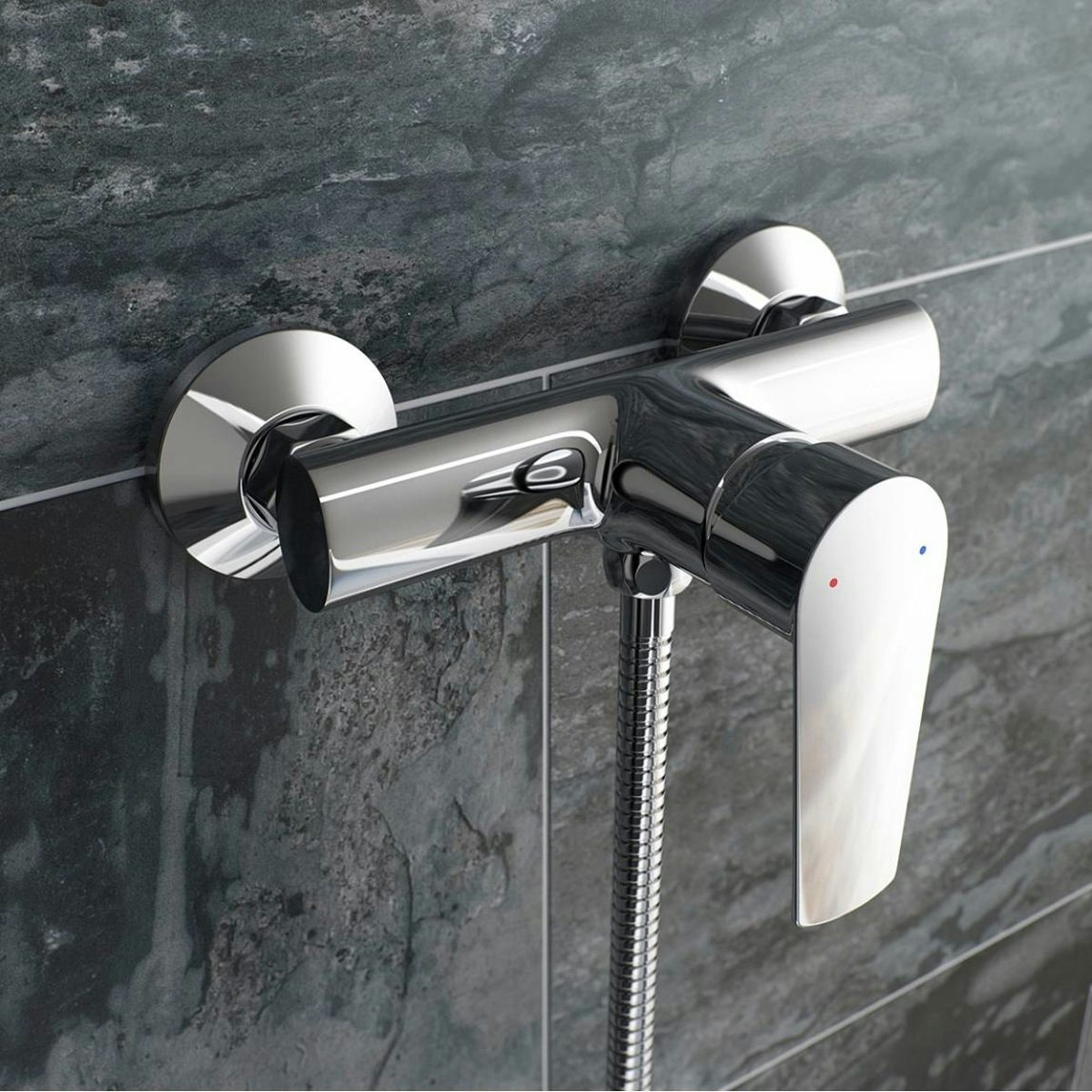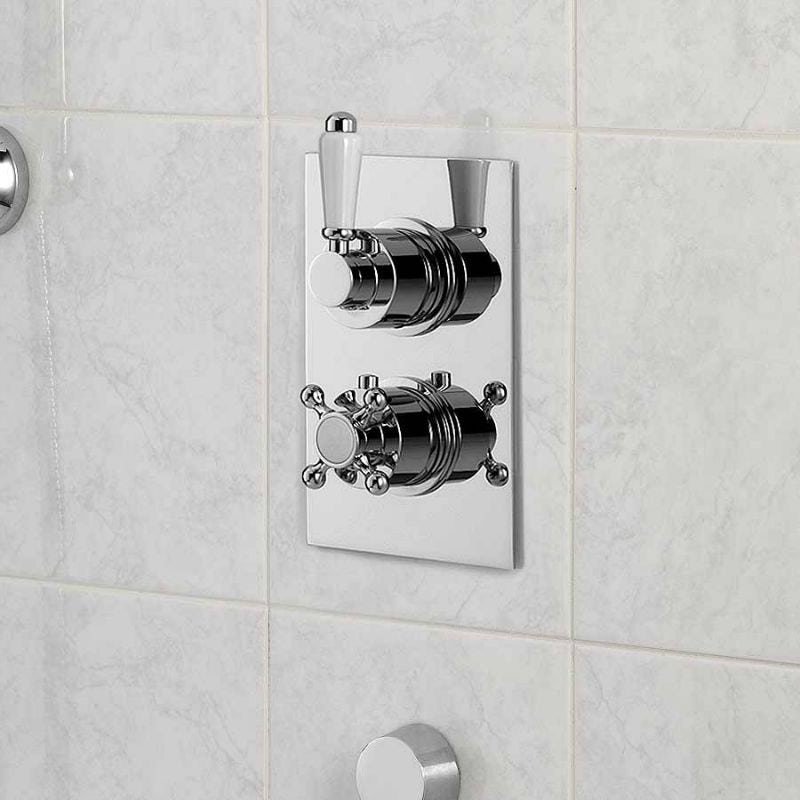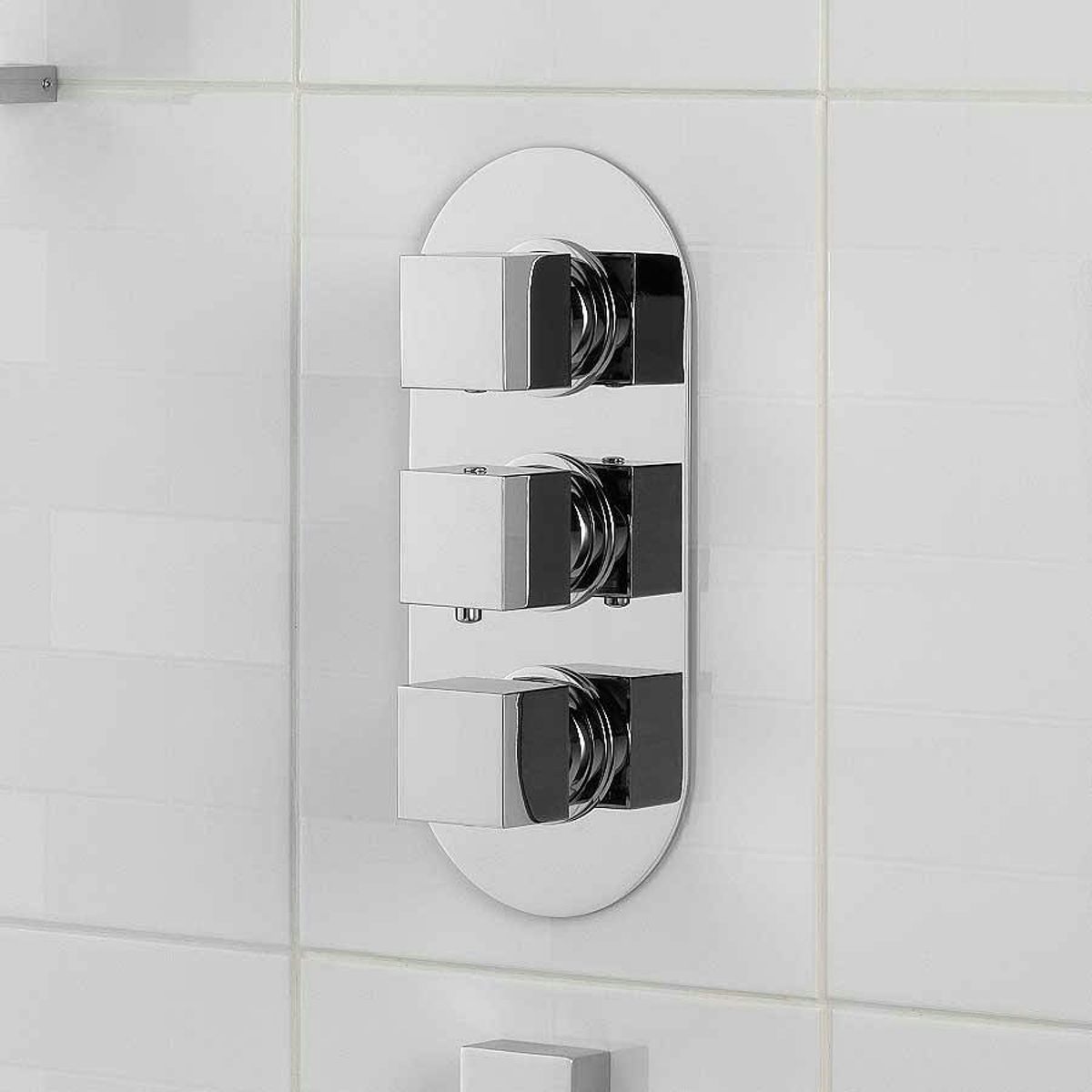What is a shower valve?
Shower valves are used to control the flow of water, similar to the tap on your basin. They come in a variety of styles to match a whole host of shower fittings, so finding one that complements your bathroom is simple, and you can even buy shower valve sets to ensure your shower head matches.
Before you browse, there are 2 main types of shower valves to consider:
Thermostatic shower valves
A thermostatic shower valve is designed to maintain the temperature of your water, so if somebody flushes the toilet or turns on a tap elsewhere in the house, you won’t suffer a scalding or freezing blast of water.
Thermostatic shower valves tend to have two or more handles. One handle is to control the temperature, and the other is to turn the water on and off. Once you’ve adjusted the temperature handle to the perfect level of heat, you can leave it in that position and simply use the on/off tap each day to ensure the water is always at your preferred temperature.
Some thermostatic shower valves have three handles; these are generally referred to as triple thermostatic valves. These are necessary when you wish to control 2 outlets, and are usually found in showers that have body jets as well as a conventional shower head.
For families with children, a thermostatic shower valve is often the best option as they usually feature an anti-scald device.
For a highly contemporary design, choose a minimalist thermostatic shower valve
Manual shower valves
A manual shower valve usually has only one handle, and this is used to control the temperature and water flow in the same way as a mixer tap you might find on a sink. Typically there is no separate handle for turning the shower on and off, so the temperature must be adjusted each time you take a shower.
Unlike thermostatic shower valves, manual ones do not regulate the temperature of the water, so should somebody turn on a tap elsewhere in the house, you may find that the water runs too hot or too cold. This can mean manual shower valves aren’t always suitable for households with children, as there is the possibility that the water may become dangerously hot.
A manual shower valve is a great low-cost option
Deciding which shower valve you need can sometimes be confusing. Do you need a twin valve, triple valve or one with a diverter? To make the choice easy, we’ve put together this simple guide on shower valves and diverters.
Guide to shower valves and diverters
Twin thermostatic shower valve
- Controls a single shower function
- 1 handle controls the temperature
- The other handle controls the water flow
A traditional style twin thermostatic shower valve
Triple thermostatic shower valve
- Supplies 2 shower functions/outlets and both shower functions can be on at the same time.
- 1 handle controls the temperature
- The other 2 handles are both flow controls for each function/outlet
Twin thermostatic shower valve and diverter
- Enables you to switch the water from shower function 1 to 2 e.g. from an overhead shower to a smaller slider rail kit
- 1 handle controls the temperature
- The other handle is the diverter which switches the water between the 2 shower functions
Triple shower valve and diverter
- Supplies 3 shower functions/outlets
- 1 handle controls the temperature
- 1 handle is a diverter which switches water flow between one of two outlets (or it can be set so that both are off) e.g. overhead shower or slider rail kit
- The final handle is a flow control which independently controls a third function/outlet from full on to full off e.g. typically body jets
Control 3 different outlets with a triple thermostatic valve with diverter
How do I install or replace a shower valve?
Whether you’ve chosen a thermostatic shower valve or a manual one, installing or replacing it isn’t usually too complicated if you’re working with copper or plastic pipes. However, if your home is fairly old and has galvanised steel pipes, then it’s better to call a plumber who will have the specialised tools necessary to carry out the work.










